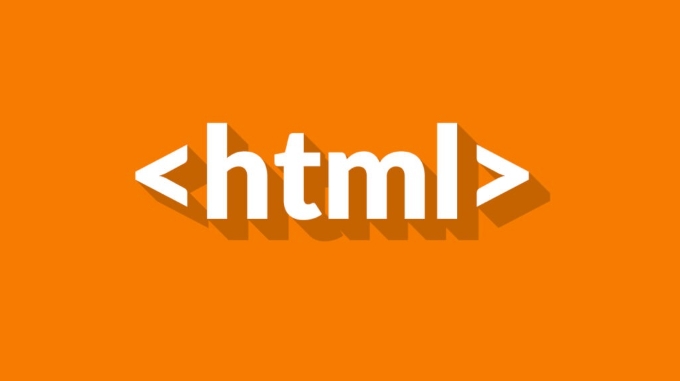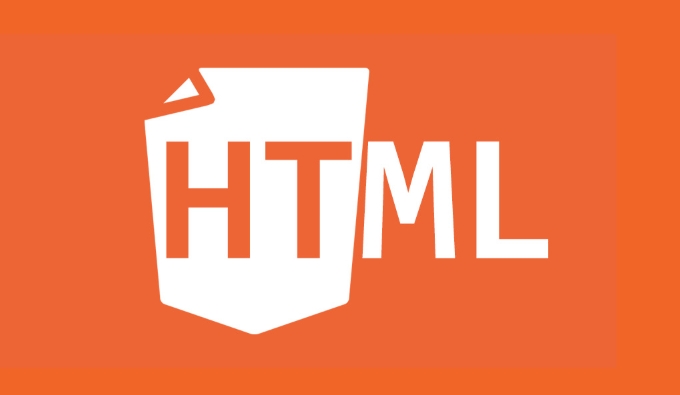HTML `details` Element Toggle State with JavaScript
To control the expansion or collapse state of the <details> element of HTML, the key is to manipulate its open attribute. 1. <details> is a native HTML element used to create a foldable content block. It is closed by default. Add the open attribute to expand by default. 2. Get the elements through JavaScript and set details.open = true to expand, details.open = false to collapse, use details.open = !details.open to switch states; 3. Common practice is to bind button click events to switch states; 4. Be careful not to judge the state with class or style, nor to set open in inline styles; 5. <details> has good compatibility in modern browsers, but old browsers may not support it; 6. Applicable scenarios include advanced form options, FAQ expansion answers, and hidden debugging information, etc. that require dynamic control of the display.

To put it directly, the key is to use JavaScript to control the expansion or collapse state of the <details></details> element of HTML. The key is to operate its open attribute.

What are <details></details> and open properties?
<details></details> is a native HTML element that creates foldable blocks of content. By default, it is closed, and the content inside will be displayed only after adding the open attribute. For example:
<details> <summary>Click to expand</summary> <p>Here is the details. </p> </details>
If the open attribute is added, the page will be expanded by default when loading:

<details open> <summary>Expand by default</summary> <p>This paragraph can be seen from the beginning. </p> </details>
How to switch the expansion state of <details> with JavaScript?
You can get the element through JS and then control its open attribute value. for example:
const details = document.querySelector('details'); // Expand details.open = true; // Collapse details.open = false; // Switch status details.open = !details.open;
A common practice is to bind click events to switch states, such as adding a button:

<button id="toggleDetails">Switch details</button>
<details id="myDetails">
<summary>More information</summary>
<p>More Instructions...</p>
</details>
<script>
document.getElementById('toggleDetails').addEventListener('click', function() {
const details = document.getElementById('myDetails');
details.open = !details.open;
});
</script> In this way, the user can control the expansion and collapse of <details></details> by clicking the button.
Frequently Asked Questions and Notes
- Don't use class or style to judge the status : Although you can add class to match the style changes,
openattribute that really controls the expansion/collapse. - It is invalid to write
openin inline style<details style="open: true"></details>it is necessary to use native attributes. - Compatibility is good, but don't expect old browsers to support : mainstream modern browsers support
<details></details>, but it will be ignored in IE or some older versions.
Suggestions for practical application scenarios
- "Advanced Options" collapse area in form
- Click to expand the answer in the FAQ page
- Hide debugging information, not displayed by default, click the button to expand to view
If you want certain content to be hidden by default, but allow users to expand actively, and want to use JS to dynamically control this behavior, <details></details> plus JS operate the open attribute is the simplest way.
Basically that's it.
The above is the detailed content of HTML `details` Element Toggle State with JavaScript. For more information, please follow other related articles on the PHP Chinese website!

Hot AI Tools

Undress AI Tool
Undress images for free

Undresser.AI Undress
AI-powered app for creating realistic nude photos

AI Clothes Remover
Online AI tool for removing clothes from photos.

Clothoff.io
AI clothes remover

Video Face Swap
Swap faces in any video effortlessly with our completely free AI face swap tool!

Hot Article

Hot Tools

Notepad++7.3.1
Easy-to-use and free code editor

SublimeText3 Chinese version
Chinese version, very easy to use

Zend Studio 13.0.1
Powerful PHP integrated development environment

Dreamweaver CS6
Visual web development tools

SublimeText3 Mac version
God-level code editing software (SublimeText3)
 The `` vs. `` in HTML
Jul 19, 2025 am 12:41 AM
The `` vs. `` in HTML
Jul 19, 2025 am 12:41 AM
It is a block-level element, used to divide large block content areas; it is an inline element, suitable for wrapping small segments of text or content fragments. The specific differences are as follows: 1. Exclusively occupy a row, width and height, inner and outer margins can be set, which are often used in layout structures such as headers, sidebars, etc.; 2. Do not wrap lines, only occupy the content width, and are used for local style control such as discoloration, bolding, etc.; 3. In terms of usage scenarios, it is suitable for the layout and structure organization of the overall area, and is used for small-scale style adjustments that do not affect the overall layout; 4. When nesting, it can contain any elements, and block-level elements should not be nested inside.
 Essential HTML Tags for Beginners
Jul 27, 2025 am 03:45 AM
Essential HTML Tags for Beginners
Jul 27, 2025 am 03:45 AM
To get started with HTML quickly, you only need to master a few basic tags to build a web skeleton. 1. The page structure is essential, and, which is the root element, contains meta information, and is the content display area. 2. Use the title. The higher the level, the smaller the number. Use tags to segment the text to avoid skipping the level. 3. The link uses tags and matches the href attributes, and the image uses tags and contains src and alt attributes. 4. The list is divided into unordered lists and ordered lists. Each entry is represented and must be nested in the list. 5. Beginners don’t have to force memorize all tags. It is more efficient to write and check them while you are writing. Master the structure, text, links, pictures and lists to create basic web pages.
 How to add an image in HTML?
Jul 15, 2025 am 03:03 AM
How to add an image in HTML?
Jul 15, 2025 am 03:03 AM
The key to adding images in HTML is to use the img tag and set the properties correctly. First, you must use the tag and set the src attribute to specify the image path. Secondly, it is recommended to add the alt attribute to provide alternative text; the path can be a relative path or an absolute path, and you need to pay attention to case, format support and server configuration; in addition, the picture style can be controlled through CSS to enhance responsiveness and aesthetics.
 Shadow DOM Concepts and HTML Integration
Jul 24, 2025 am 01:39 AM
Shadow DOM Concepts and HTML Integration
Jul 24, 2025 am 01:39 AM
ShadowDOM is a technology used in web component technology to create isolated DOM subtrees. 1. It allows the mount of an independent DOM structure on ordinary HTML elements, with its own styles and behaviors, and does not affect the main document; 2. Created through JavaScript, such as using the attachShadow method and setting the mode to open; 3. When used in combination with HTML, it has three major features: clear structure, style isolation and content projection (slot); 4. Notes include complex debugging, style scope control, performance overhead and framework compatibility issues. In short, ShadowDOM provides native encapsulation capabilities for building reusable and non-polluting UI components.
 Preloading Resources with HTML `link rel='preload'`
Jul 19, 2025 am 12:54 AM
Preloading Resources with HTML `link rel='preload'`
Jul 19, 2025 am 12:54 AM
linkrel="preload" is a technology that optimizes page loading performance and is used to load critical resources in advance. Its core purpose is to prioritize loading of resources that are critical to home screen rendering, such as fonts, key CSS/JS and home screen images. Pay attention to when using: 1. Set the as attribute correctly to specify the resource type; 2. Avoid abuse and prevent excessive bandwidth usage; 3. Ensure that the resources will be actually used, otherwise it will cause waste of requests; 4. Add crossorigin attribute to cross-domain resources. Incorrect writing method such as the lack of the as attribute will cause the preload to be invalid. Rational use can improve page loading efficiency, otherwise it may be counterproductive.
 What are the different types of lists available in html and their usage?
Jul 15, 2025 am 02:59 AM
What are the different types of lists available in html and their usage?
Jul 15, 2025 am 02:59 AM
HTML provides three list types to structure content. 1. Unordered list () is used for entries that require no order, such as function list or ingredients; 2. Ordered list () is used for sequential content, such as step description, and supports multiple numbering formats; 3. Description list (,,) is used to pair terms and descriptions, such as dictionaries or product specifications; in addition, it also supports nested lists, which can add sublists under the main entry to organize complex information, thereby improving page readability and accessibility.
 Can you put a tag inside another tag?
Jul 27, 2025 am 04:15 AM
Can you put a tag inside another tag?
Jul 27, 2025 am 04:15 AM
❌Youcannotnesttagsinsideanothertagbecauseit’sinvalidHTML;browsersautomaticallyclosethefirstbeforeopeningthenext,resultinginseparateparagraphs.✅Instead,useinlineelementslike,,orforstylingwithinaparagraph,orblockcontainerslikeortogroupmultipleparagraph
 HTML `style` Tag: Inline vs. Internal CSS
Jul 26, 2025 am 07:23 AM
HTML `style` Tag: Inline vs. Internal CSS
Jul 26, 2025 am 07:23 AM
The style placement method needs to be selected according to the scene. 1. Inline is suitable for temporary modification of single elements or dynamic JS control, such as the button color changes with operation; 2. Internal CSS is suitable for projects with few pages and simple structure, which is convenient for centralized management of styles, such as basic style settings of login pages; 3. Priority is given to reuse, maintenance and performance, and it is better to split external link CSS files for large projects.







